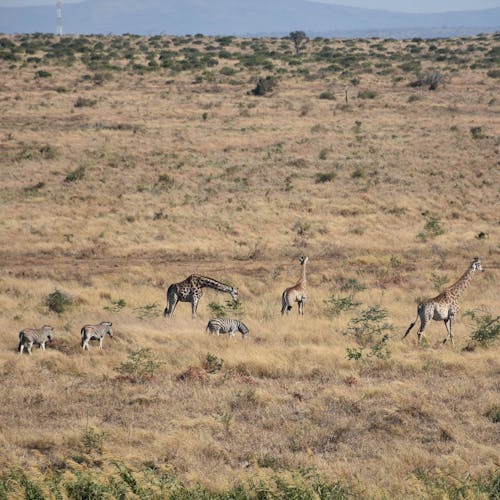
What we can learn from nature - lessons in sacrifice, wisdom, tolerance and collaboration
When we’re not sure what to make of things, a very normal thing to do is to turn to people we trust. We ask our families, friends or teachers for advice. But if they don’t have the answers, or we want a truly unbiased perspective, we might look outside our circle and take some inspiration from nature. Many species have been around longer than we have, after all! Here are a few timely lessons we can learn from flora and fauna.
Service before self
Giant Pacific Octopus exemplify selfless sacrifice. The female octopus nurtures her eggs for years, not once leaving them to find food for herself. She guards the eggs against predators and continuously “fans” them with fresh, oxygenated water. Scientists in California have observed a single octopus guarding her eggs for 53 months! Once the eggs hatch, the octopus dies, having exhausted herself in this incredible protective vigil.
Wisdom before prowess
Elephants are one of the species that people are quick to mention when asked about “the most intelligent” animals. Elephants are perceived as wise. They are also known for their complex social structure. An elephant herd does not entrust its survival to a bull elephant in musth but to the wisdom of the matriarch elephant. The matriarch will make decisions for the herd in a crisis and will teach the young elephants.
Successful leaders earn respect through their wisdom, confidence and connections with other elephants. They need to care for the needs of their herd, and be compassionate to their herd as well as the members of other herds.
Welcome migrants
Everybody knows how the thing with the birds and the bees works, right? As well as the bees and the flowering plants? In short: A bee travels to the flower, sips nectar, takes it home to the hive and makes honey. So, the bee is a migrating worker who goes in search of a good job and takes the paycheque back home. Of course that’s not all there is to it. In moving about, the bee takes pollen to another flower and fertilises it. The fertilised flower grows a fruit. The bee makes yummy honey with the nectar. We like fruit, we like honey, and we like to look at flowers – so really, the migrating bee has been quite good news for the honey and fruit economy.
Make friends with another species
Sometimes life throws you together with folks who are a bit different from yourself, and if you keep an open mind, you might find out how much fun they are! At Care for Wild Africa Rhino Sanctuary, goats and rhinos happily share an enclosure. The “rhino-goat” alliance goes way back to two of Care for Wild’s earliest residents.
Just a few weeks after the rehabilitation centre was founded, an orphaned rhino calf named Bobby was brought to Care for Wild – and he came with a goat named Billy in tow. When Bobby’s mother was killed by poachers, he was found by the reserve’s owner and brought to the farm for protection. The lonely rhino calf promptly imprinted on Billy, seeking consolation. To keep the traumatised Bobby calm, Billy moved along to Care for Wild. Several years later, Care for Wild is looking after over twenty rhino calves, as well as a whole tribe of goats. The curious affinity between the two species continues. It seems that one good turn deserves another. While Billy provided comfort to Bobby, the rhinos now give the goats a helping hand, or back: they make excellent climbing frames, allowing the goats to get to the best leaves!
